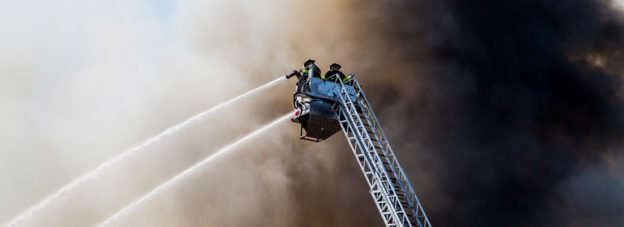Philadelphia Contributorship Ins. Co. a/s/o David Munz v. Ryan, Inc., 2019 N.J. Super. Unpub. LEXIS 62, involves a typical fire loss subrogation claim requiring expert testimony from an origin and cause consultant and a furnace consultant. The facts are straightforward. The Munz home lost heat. Munz called furnace service contractor Ryan, Inc. to check the system and make needed repairs. One month later, a fire originating in the furnace damaged the home. Munz’s insurer paid the first party claim and filed a subrogation action against Ryan, Inc. The underlying liability theory was that the Ryan, Inc. furnace technician should not have repaired the furnace and placed it back into service.
The trial judge issued various discovery orders setting deadlines for expert disclosures. On the last permissible day, the plaintiff produced written summaries, not the actual reports, of its origin and cause consultant and its furnace consultant. The origin and cause disclosure generally stated that the fire originated at the furnace. The furnace consultant disclosure generally stated that the chimney pipe and heat exchanger showed significant corrosion holes that should have been readily visible to the service technician.
The defendant moved to preclude the testimony of both the origin and cause consultant and the furnace consultant as inadmissible net opinions. The trial court granted the motion and dismissed the case. Likely to the chagrin of the origin and cause consultant, the plaintiff did not appeal the order precluding his testimony. Instead, the plaintiff’s appeal focused on that portion of the trial court’s order that precluded testimony from the furnace consultant and granted the defendant’s motion for summary judgment.
The New Jersey Superior Court, Appellate Division, affirmed the trial court’s preclusion of the furnace consultant’s testimony and the resulting grant of summary judgment. The court found that the trial judge did not abuse his discretion in concluding, based on the expert disclosure submitted, that the consultant was seeking to render an inadmissible net opinion. The court reasoned that the consultant failed to provide the “why[s] and wherefore[s]” to support the opinion and properly explain the methodology he utilized. The Appellate Court’s opinion, though unreported, sheds a bright light on several fundamental concepts in fire litigation.
A vital prerequisite to a viable fire subrogation lawsuit is an NFPA 921-compliant investigation performed by an NFPA 1033-qualified origin and cause consultant who has not strayed from his or her area of expertise. Equally as vital is a comprehensive report or expert disclosure setting forth the facts gathered during the investigation, an explanation of the industry-accepted principles and methods used during the investigation, and a discussion showing the reliable application of those principles and methods to the facts of the case.
Counsel must work together with and support their consultants as they necessarily rely upon each other. Both must make sure that expert reports comply with the applicable court’s rules and actually get submitted to the court for consideration. When there is an evidentiary challenge, counsel must notify the consultant immediately. Counsel and the consultant must then work hand-in-hand to prepare the necessary response to the challenge. Counsel should also give the consultant the opportunity to retain his own representation to assist in preparing the response. Failing to follow these basic procedures increases the risk that a court will grant a preclusion motion not because the consultant did a bad job, but because of deficiencies in the opposition papers, a result that is unfair to both the consultant and the client.

